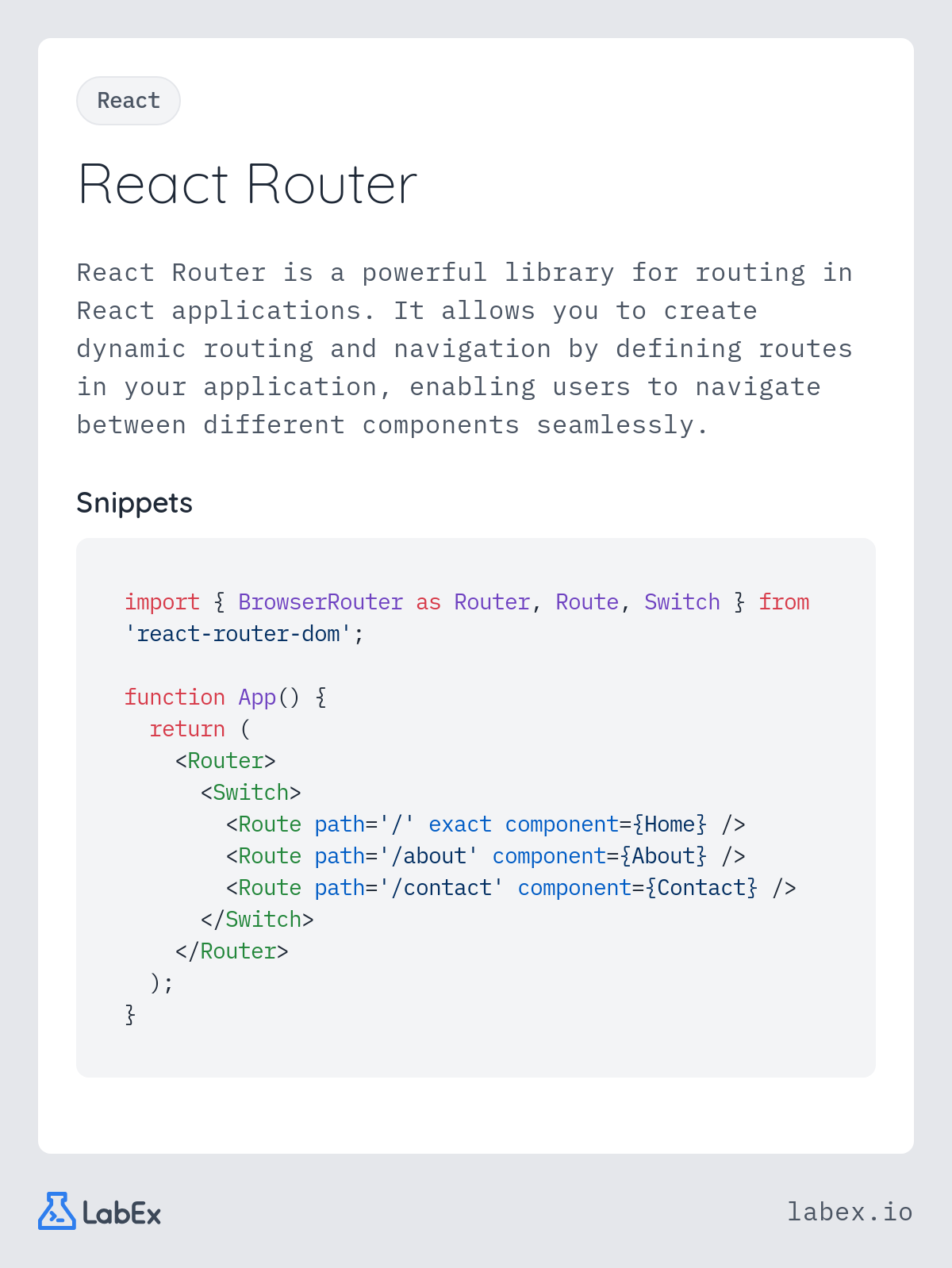
React Router
React Router is a powerful library for routing in React applications. It allows you to create dynamic routing and navigation by defining routes in your application, enabling users to navigate between different components seamlessly.
Explore our curated collection of programming flashcards. Each card contains practical examples and code snippets to help you master programming concepts quickly.